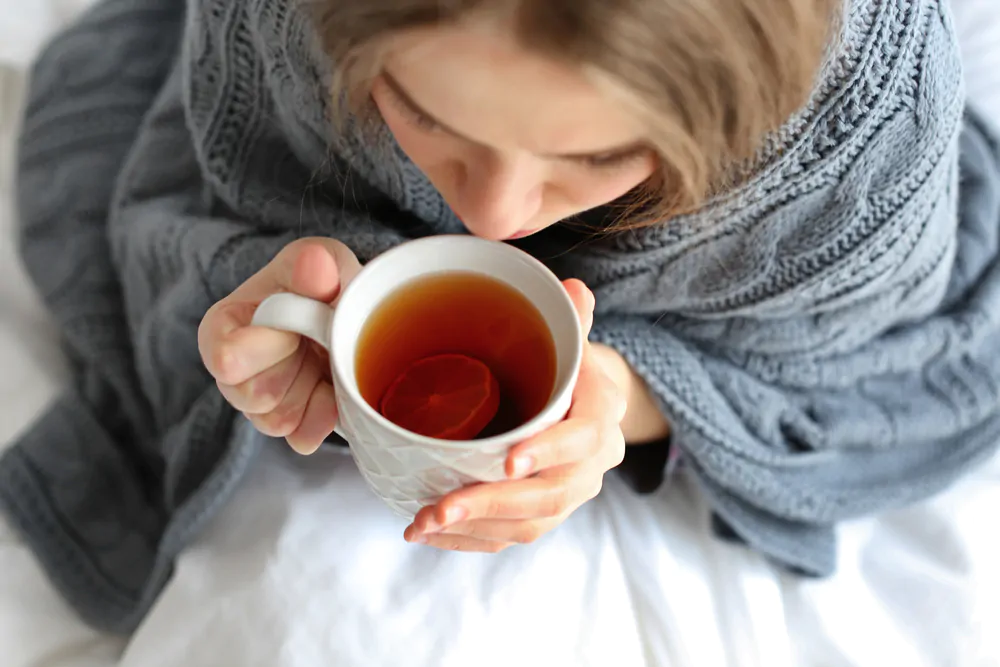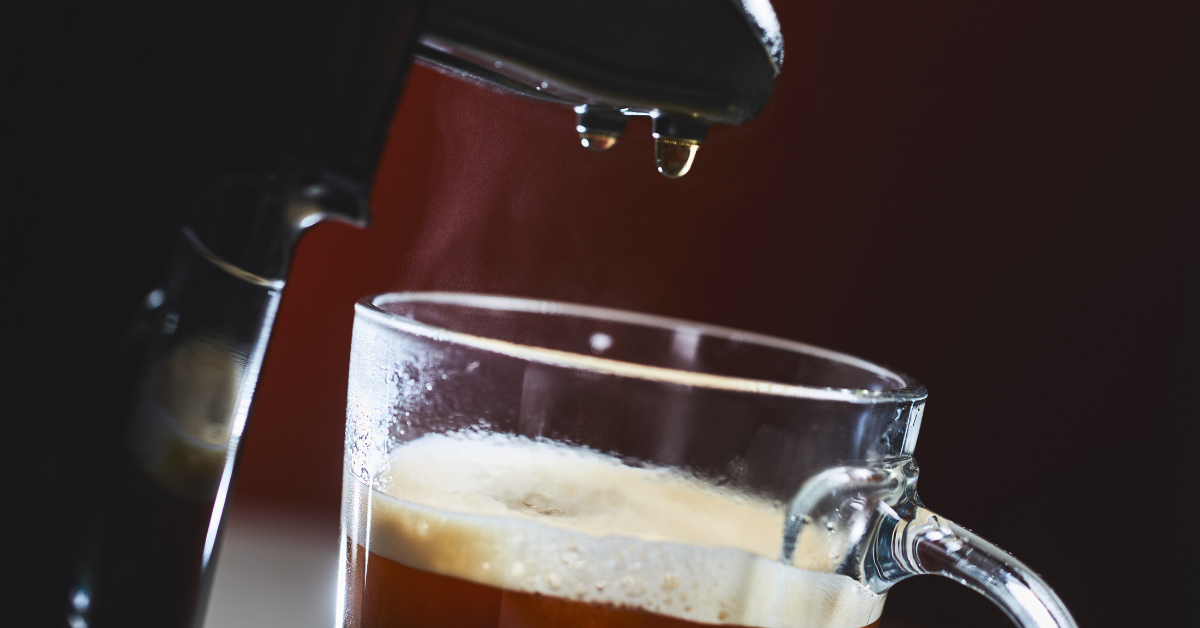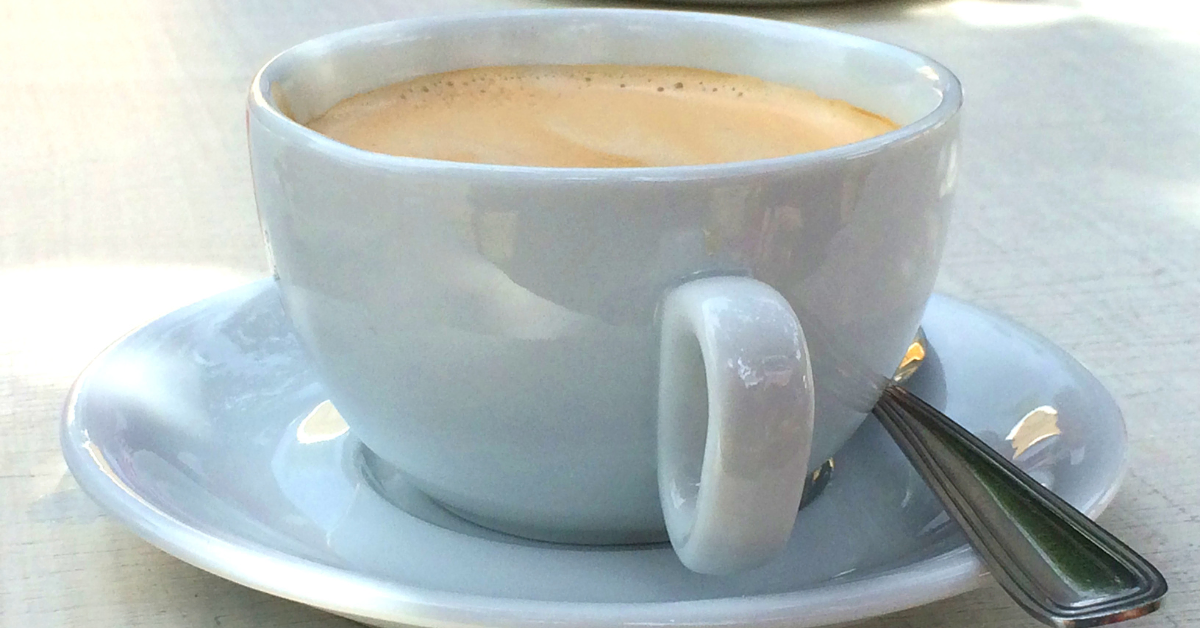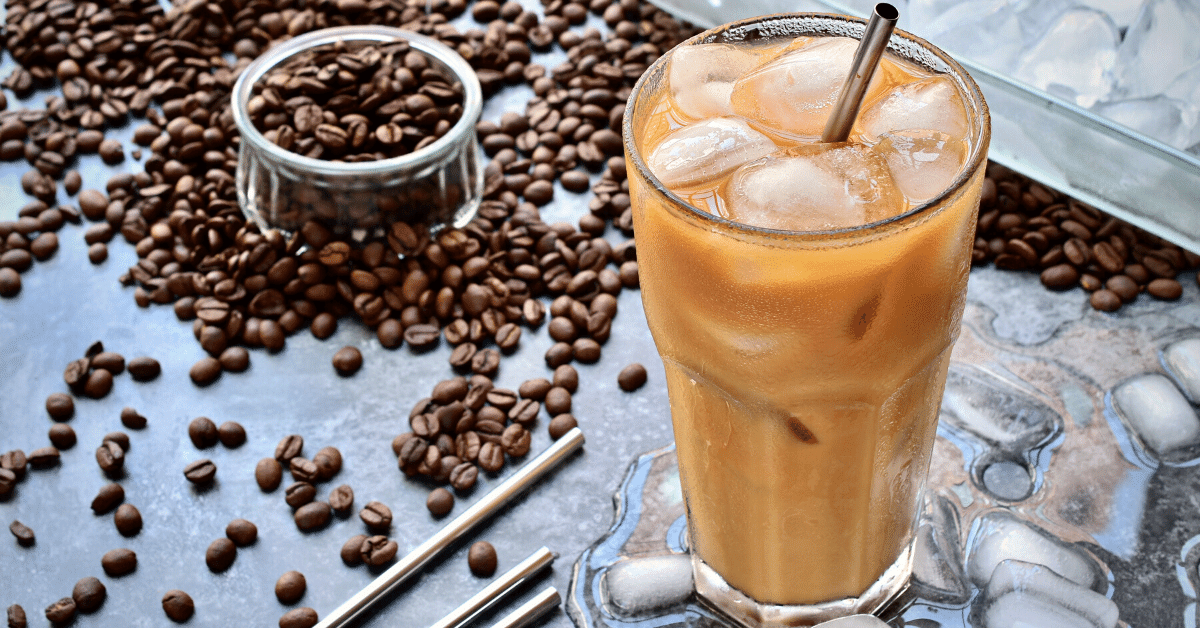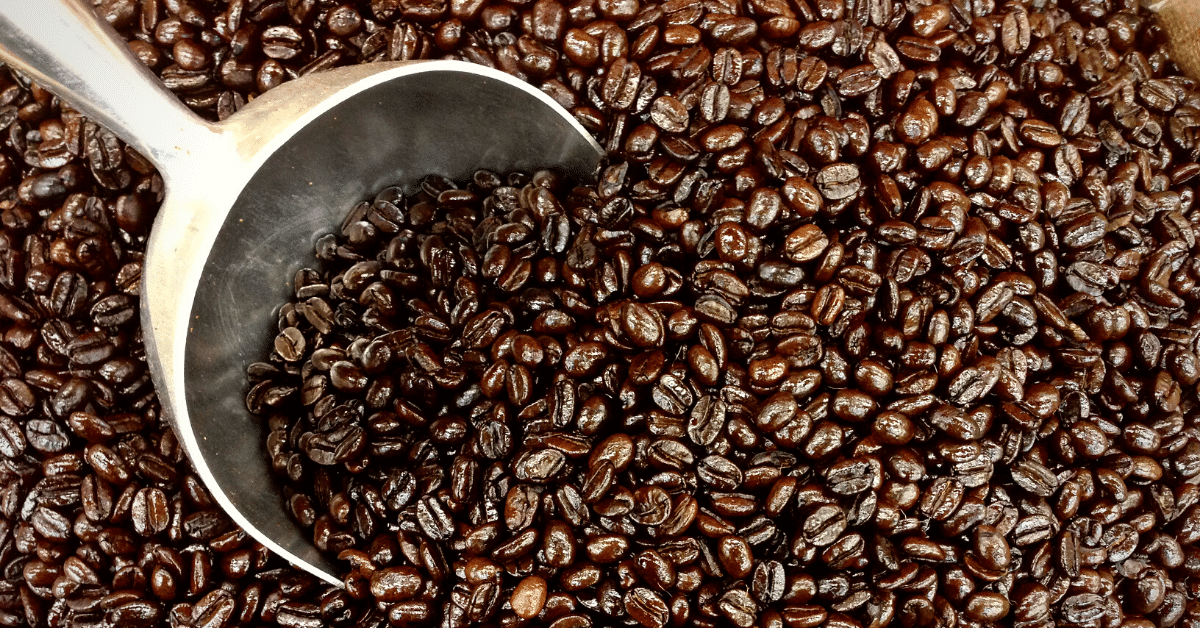A cup of herbal tea does wonders when you’re feeling a bit unwell. Let’s dive in and find out the best tea when sick.
If you’re feeling sick and want to recover quickly, going for a hot drink is an effective home remedy that has stood the test of time.
But what is the best tea when sick? Some of the healing teas are green tea, chamomile, peppermint, and ginger. But the list is much longer since there is an immense number of plants that can help you in your recovery.
So, how to pick? I will help you with that. In this article, I will give you my top choices and some tips for brewing healing teas.
If you are a coffee lover, though, you might wonder, does coffee help sore throat? Check out our guide on the subject and discover the health benefits of coffee.
Now, let’s dive into the world of healing teas and their properties!
Best Tea When Sick: Top Herbal Choices
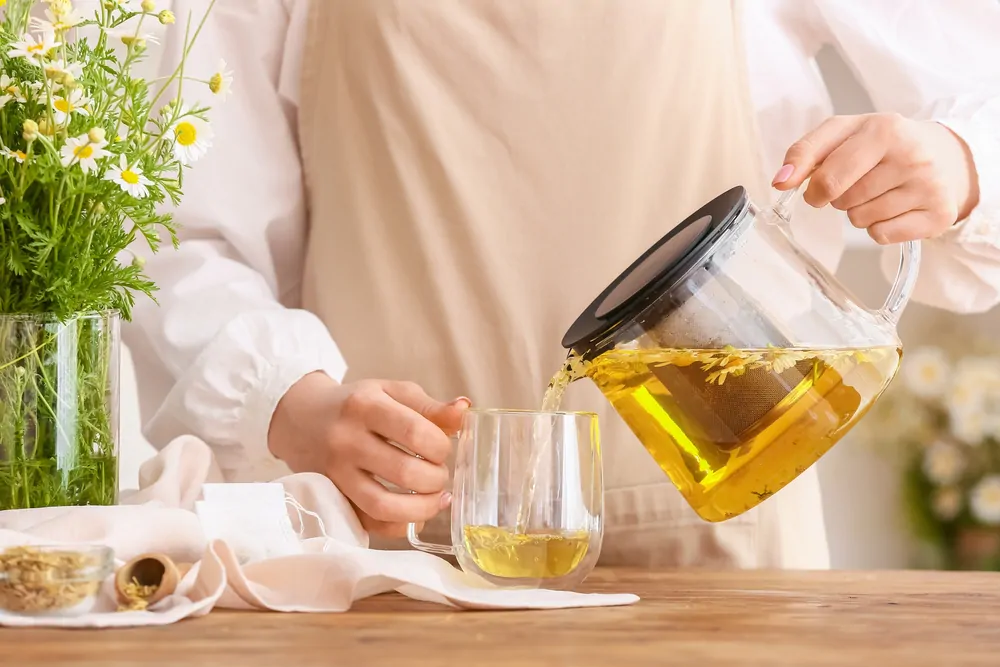
All you need to know about the health benefits of tea is steeped in its deep and rich history. Tea was considered a medicinal beverage for a thousand years. It was one of the best natural medicines and health boosters before it became a daily drink around the 3rd century AD.
Today, we know even more about teas and their health benefits thanks to decades of advanced scientific research on their specific properties.
Aside from providing instant relief from more common illnesses, drinking tea also helps prevent developing more serious ailments. Let’s review the different teas that double as reactive health cures and preventive measures. Depending on your health needs, this should help you decide which herbal tea to drink.
Do take note that tea is no substitute for professional medical assistance. If symptoms persist for any issue, it’s best to consult your doctor immediately. You might also be wondering, does coffee help with a sore throat?
- Chamomile Tea
A crowd favorite, chamomile presents anti-inflammatory and anti-microbial properties that may help combat different ailments. Chamomile gets its medicinal value from flavonoids, a proven therapeutic agent in different herbs, flowers, and seeds.
Among the health benefits of this caffeine-free tea are relieving an upset stomach, nausea, and menstrual pain. Research suggests it may lower the risk of developing cancer, but studies have been inconclusive.
- Peppermint Tea
Another popular natural remedy for its distinct taste is peppermint tea, which has been found to have anti-inflammatory and anti-viral properties. The menthol found in the peppermint leaves helps soothe body aches and can even cure constipation, irritable bowel syndrome, and motion sickness.
Additionally, this caffeine-free herbal blend can clear out congestion caused by phlegm in the sinuses, making breathing easier.
- Lemon Tea
Lemon’s high citric acid content boosts your immune system. It also cleanses the liver. Citric acid acts as a natural diuretic, also known as a “water pill,” because it helps the body release excess water and salt.
Drinking lemon tea provides a low-sugar, low-calorie option to decrease blood sugar levels and blood pressure. It also reduces the risk of developing urinary tract problems and, notably, kidney stones because of its high citric acid content that helps break down these deposits.
- Lemongrass Tea
Not to be confused with lemon tea, lemongrass tea is an underrated herbal drink with a hint of sweet, lemony taste and aroma. It relieves sudden adverse reactions, including bloating or nauseating effects from spikes in blood pressure or cholesterol levels.
Lemongrass also helps ease anxiety, promote oral health, and boost your immune system. A staple in Southeast Asian medicine, it is also naturally caffeine-free, so you can have it all day, especially during flu season, and prevent cold symptoms. Just grab one or two stalks of lemongrass, steep in hot water, and you have a lemongrass tea.
- Hibiscus Tea
This bright red-orange tea derived from the flowers of the hibiscus plant offers beneficial nutrients such as calcium, magnesium, and potassium.
Another content of hibiscus is anthocyanin, an antioxidant that’s usually indicated by pigment with red, blue, or purple hues found in plants. It acts as an antioxidant and has anti-microbial properties. It also has other potential health benefits, such as lowering the risk for chronic diseases like cancer, obesity, and diabetes.
- Elderberry Tea
Another herbal tea with the anthocyanin antioxidant is elderberry tea, which is also rich in vitamin C. Elderberry has flavonoids as an active ingredient that is said to have antibacterial properties. It promotes mental, cardiovascular, and respiratory health benefits.
Elderberry may be used as a natural remedy for various illnesses. The list includes the common cold, urinary and kidney problems, epilepsy, and even nerve pain.
- Echinacea Tea
Used by Native Americans centuries ago as a panacea or a “cure-all” because of its anti-viral and anti-inflammatory properties, echinacea is now recommended as one of the best teas to fight various viruses and bacteria from infections.
Echinacea is commonly used to relieve cold and flu symptoms like fever, cough, and sore throat. However, there are studies suggesting that echinacea may also help prevent the growth of colon tumors and an effective treatment for the Herpes Simplex Virus, though more studies need to be conducted for the latter.
- Licorice Root Tea
Licorice root was used as a traditional medicine in ancient times, mainly as a decongestant of excess phlegm in the airways. It was also popular as a Chinese medicine to relieve stress.
While more evidence is needed to prove its proven health benefits, licorice tea is anti-microbial, anti-viral, and anti-inflammatory. It is also good for the liver, heart, skin, gums, and teeth and can serve as a therapeutic agent for the toxic effects of substance abuse.
- Nettle Tea
A wild plant with fine hairs on the leaves and stems, nettle is commonly used as a pain reliever for muscles and joints. That may help alleviate some of your pain while recovering from the flu.
Nettle is rich in Vitamin C and also features flavonoids that curb the creation of free radicals. The tea may also relieve allergy and skin irritation and even treat the early stages of an enlarged prostate.
- Ginger Tea
If you’re looking for a spicy taste with a full-bodied flavor, ginger may be your cup of tea. It is one of the best options to combat morning sickness and boost the immune system.
Ginger is rich in vitamins and minerals, including vitamins C, B3, and B6, as well as iron and potassium. This is why it’s used to help treat various illnesses, from joint pain caused by osteoarthritis and inflammation to gastrointestinal issues and cardiovascular diseases.
Other Tea Options

There’s more to tea than the herbal variety made from medicinal leaves, flowers, and spices. Another type is called true tea, which comes from the leaves and buds of the Camellia sinensis plant. These are your black, green, white, and oolong teas.
Unlike herbal teas, true teas contain caffeine. While it’s not necessarily advisable to drink when sick (since caffeine will energize you while you need plenty of rest), it still offers great health benefits.
- Green Tea
According to studies, green tea comes rich in catechins. It’s an antioxidant with multiple health benefits, including combating flu infections and the common cold. Sipping green tea also slows the growth of cancer cells and even causes them to die altogether.
A popular kind of green tea is matcha. Thanks to its rich antioxidant content, it’s considered a superfood that curbs cellular damage and prevents heart ailments.
- Black Tea
Besides being deemed a healthier alternative to energy drinks and coffee due to its caffeine content, black tea also has tons of catechins.
According to studies, drinking black tea eases hypertension, which is known to lead to more serious illnesses, such as heart attack, stroke, and kidney damage. This non-sweetened drink is also good for digestion and weight control.
- White Tea
Research suggests that white tea can kill disease-causing organisms. It has many healing properties, including the type that specifically protects high-risk individuals from developing colon cancer.
This might be because it contains the highest antioxidant content among all types of teas as it is less processed.
How to Make Tea Taste Better
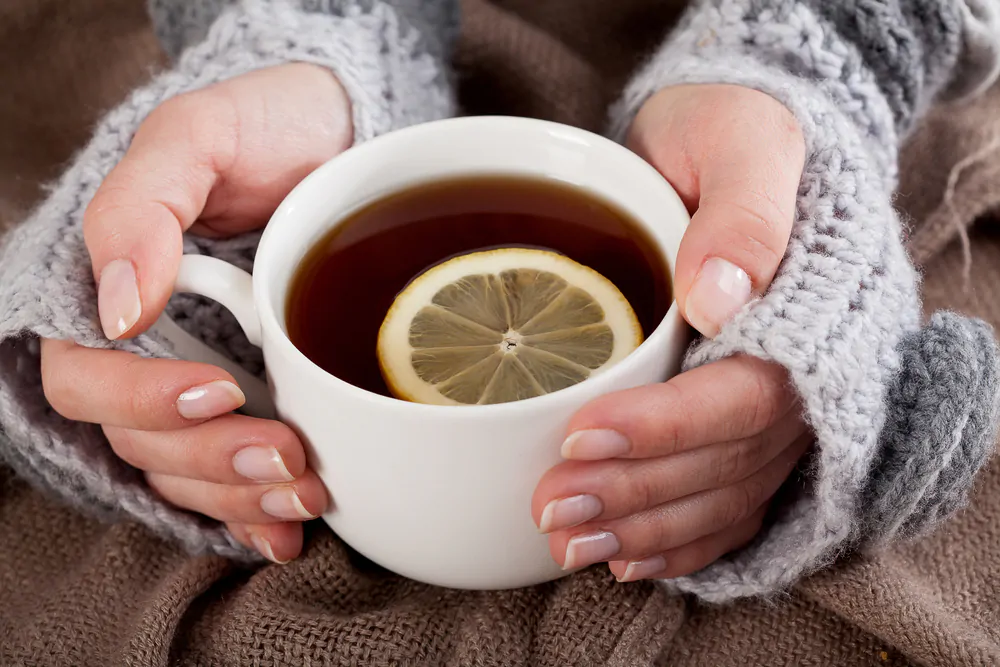
Not everyone is the biggest fan of a cuppa because of its strong and sometimes overwhelming natural flavors. Still, there are ways to make the taste of tea palatable and delicious.
Here’s a list of items you can easily find in any grocery store to elevate your tea-drinking experience. Add any of these to turn your tea from an obligatory health booster to an exciting drink you can enjoy.
- Honey
Honey is a popular natural sweetener that most people add to their tea.
Aside from having its own anti-microbial and antioxidant properties, infusing your tea with honey does not reduce your drink’s nutritional value.
Most people don’t know that adding cream or even milk to your tea can wipe out polyphenols, a nutrient that helps the sick recover faster. Honey is the opposite and works with a cuppa, especially green tea. They can alleviate symptoms and reduce the common cold and flu risk.
- Plant-Based Milk
Not all milk dilutes the nutritional value of your cuppa. Using the plant-based variety sustains the tea’s health benefits to a degree while adding delicious creaminess minus the guilt. Consider using soy, coconut, almond, or rice milk. If you would like to turn your plant-based milk into a creamy froth, read our guide on frothing almond milk.
- Citrus
If you want more zest to your tea, go for citrus fruits, most of which are rich in vitamin C. Simply cut a slice of grapefruit, orange, lime, or lemon; squeeze the juice into the cup, and enjoy a much more delicious and nutritious drink.
- Herbs And Spices
Who said herbs and spices are only used for cooking? Spices have been used in tea for eons, which is why there are countless spiced tea drinks. Among the world’s most famous spices added to tea are cardamom, nutmeg, cinnamon, and cloves.
Adding fresh herbs also bumps the flavor of tea without adding sweetness. Basil, rosemary, and lemon verbena work with lighter teas, while most herbs work well with white and green tea.
- Berries
Combining strawberries, blueberries, and raspberries adds a pleasant and filling surprise to your tea, leaving you satisfied and less hungry. Berries add sweetness and a much-welcome texture to tea.
If you want a fruitier and refreshing taste, try raspberry with iced tea or any berry with hibiscus.
Tea Brewing Tips to Bring Out More Flavor

Brewing tea can be simple and complex at the same time. For beginners, it’s as elementary as boiling water. For experts like a tea sommelier, the process is a sacred art. The slightest change in water temperature or steep time can spell the difference between a reject and the perfect cup.
Follow these pointers to bring out more flavor in your tea.
- Choose Loose-Leaf Tea
When choosing a teabag, always choose the loose-leaf variant over broken-up tea leaves. Loose-leaf tea creates more complex flavors because it blooms wider and allows for more water absorption. That allows it to extract more flavor, aroma, and, most importantly, its beneficial natural properties.
- Choose Your Water
Even the selection of water can have a major effect on the taste of your tea. Go for bottled water for a cleaner profile if you dislike the taste of tap water. Choose filtered or purified water over the distilled type if possible, as the latter creates a dull-tasting cuppa.
Having the right tools also helps in your brewing. Pick the best gooseneck kettle to level up your brewing game.
- Taste While Steeping
Try tasting your tea as it steeps. Remember that you control the strength of your tea’s flavor profile. If it’s too bland, it may need more time to steep. If you want to avoid the bitter taste, avoid over-extraction. Taste your tea while steeping every 30 seconds to hit your preferred taste.
Black and green tea usually need to be steeped for around 3 to 5 minutes, with room for longer steeping if you prefer more caffeine. Regarding white teas, steeping time depends on the type of leaves you are using, as some require just 1 to 3 minutes, and some 5 to 10 minutes.
Green Tea Supremacy
My days consist of multiple cups of tea. I religiously have one in the morning, one in the afternoon, and more in between just for the love of it. The health benefits are just a much-welcome bonus.
I spend hours and hours with tea sommelier-friends over our shared passion for tea. They say the best kind is the one you like best, which is green tea for me. There’s just something about its strong flavor profile, sharp taste, and smooth finish that I can’t get enough of.
Green tea also contains the highest amount of epigallocatechin gallate, or EGCG, among other teas. This compound is found to be one of the strongest antioxidants and offers various health benefits, as well! Check out our article on what is epigallocatechin gallate to learn more.
Keep in mind that a cup of tea can’t fix everything health-wise. While drinking tea may help relieve symptoms of a crippling flu or serve as a natural antihistamine during an allergy attack, it cannot and should not replace a consultation with your doctor.

